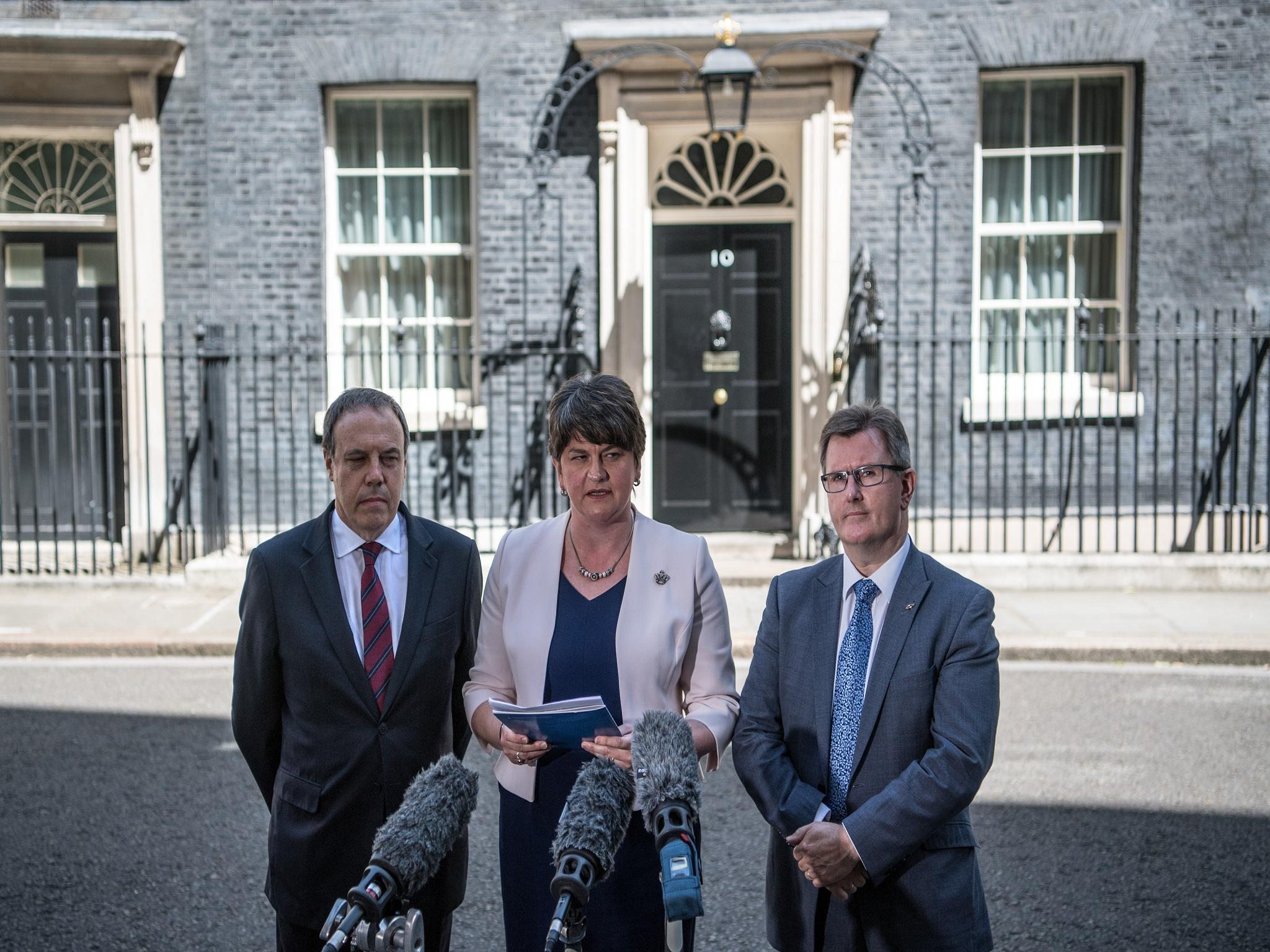DUP deal: How much extra money has the party extracted from Theresa May? And is it fair?
Northern Ireland already receives more than a fifth more public spending per head than the UK-wide average. The additional spending announced on Monday will increase this discrepancy further

Theresa May has concluded a deal with the Democratic Unionist Party of Northern Ireland to keep her minority Government in power.
It involves an increase in public spending in Northern Ireland.
But what is in the deal? And is it fair on other UK taxpayers?
What exactly have the DUP been promised?
In return for agreeing to the “supply and confidence deal” with the Conservatives, the DUP have extracted a series of financial pledges for “additional financial support” for the Northern Ireland Executive.
This includes £400m for infrastructure development in the province.
There is £150m for ultra-fast broadband rollout and £200m for heath. There’s also money to tackle deprivation and mental health.
The total package of additional spending adds up to around £1bn.
Is this a lot of money?
There are around 1.86 million people in Northern Ireland so this £1bn equates to around £550 per head.
According to the Office for National Statistics, the size of the Northern Irish economy in 2015 was just £34bn, so this represents a non-negligible boost of 3 per cent of GDP.
However, £850m of the money is being spent over two years, and the rest over five years.
Doesn’t Northern Ireland already get more public spending than the rest of the UK?
Yes. Northern Ireland in 2015-16 received £26bn of public spending.
That’s £14,018 of public spending per head of the province’s population.
This was more than a fifth higher than the UK-wide average of £11,579. The region receives more per head than Scotland or Wales.
The additional spending announced on Monday will increase this discrepancy further. Further, Ireland contributes less in tax revenues than the national average, meaning that Northern Ireland’s imputed fiscal deficit in 2015-16 was £10bn, or around £5,400 per person, higher than Scotland’s £2,800 and Wales’ £4,500.
London, by contrast, had a £26bn regional fiscal surplus, or £3,000 per person.
Is this extra spending on Northern Ireland fair?
Northern Ireland has higher public spending per head, in part, for historic reasons.
Successive governments since the 1999 Good Friday Agreement have been willing to spend generously in Northern Ireland, particularly on public sector employment, in order to reduce the possibility of a return to the Troubles.
Many will see this as a reasonable price to pay for preserving peace.
But whether it’s worth augmenting this subsidy primarily in order to keep the Conservatives in power is another question entirely.
Especially as this might not be the end of the demands.
“£1bn for Ulster is just a downpayment,” tweeted the former Permanent Secretary to the Treasury Nick Macpherson, someone with experience of overseeing Northern Irish spending requirements.
“DUP will be back for more again and again. They have previous in such matters”.
The cost for this £1bn extra spending attributable to each of the UK’s 65 million people is around £15.
Subscribe to Independent Premium to bookmark this article
Want to bookmark your favourite articles and stories to read or reference later? Start your Independent Premium subscription today.

Join our commenting forum
Join thought-provoking conversations, follow other Independent readers and see their replies